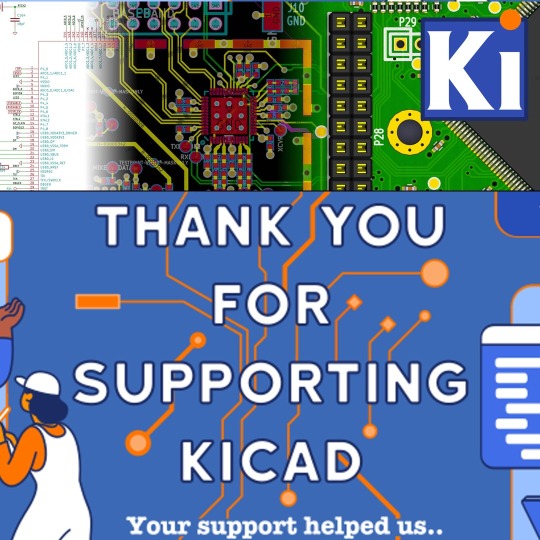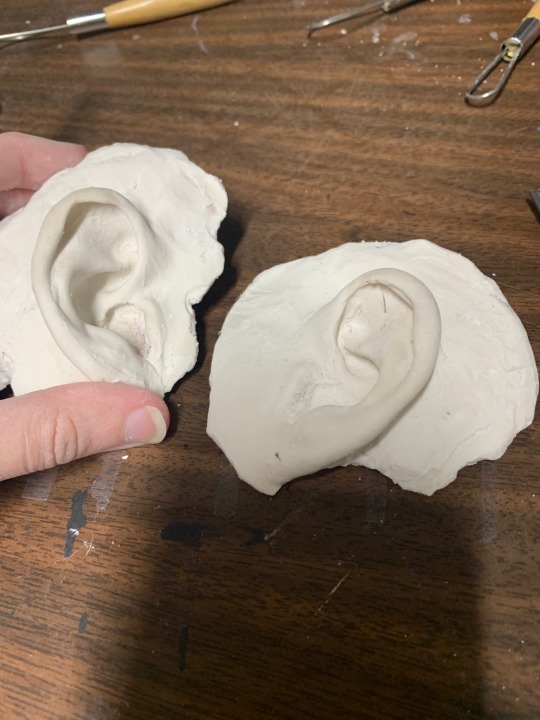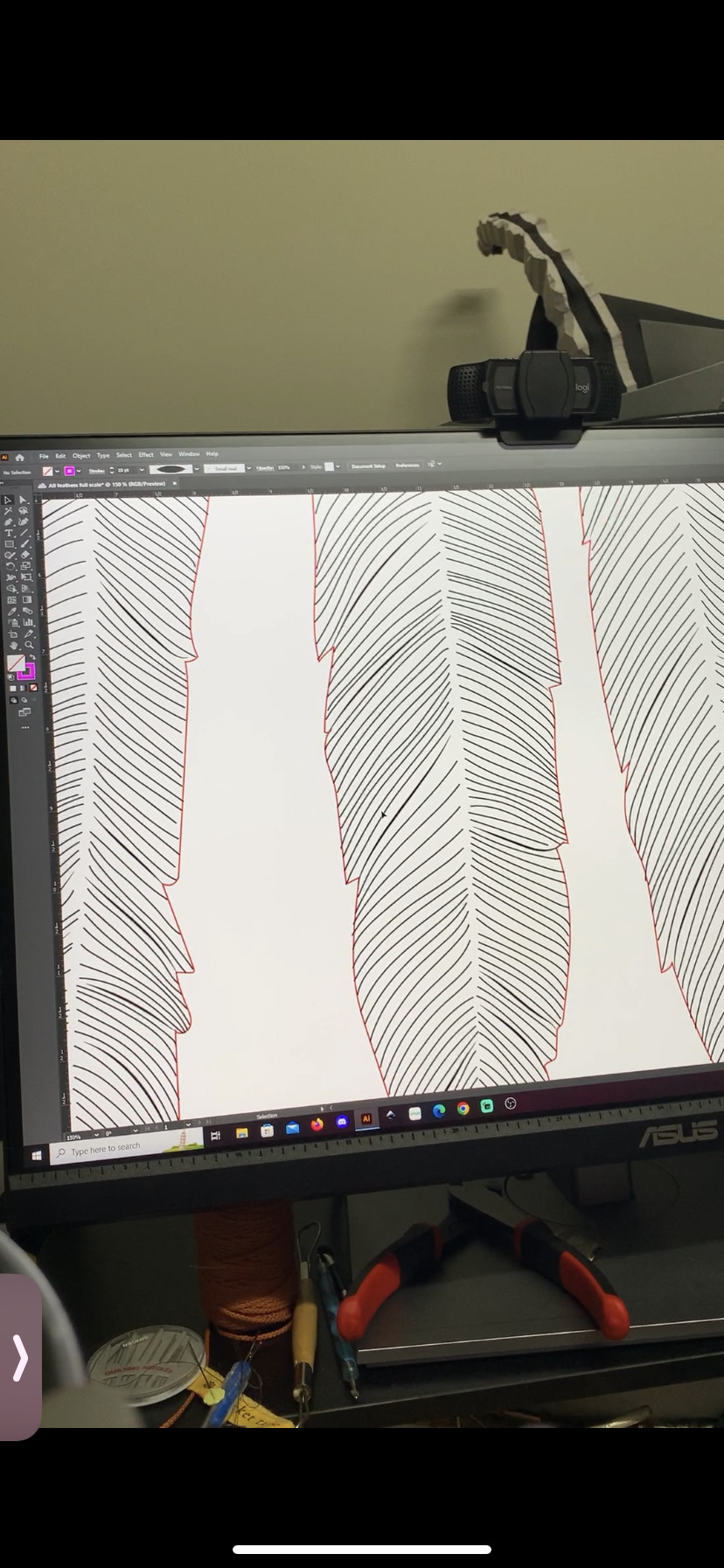#EDA software
Explore tagged Tumblr posts
Text
Discover the Synopsys stock price forecast for 2025–2029, with insights into financial performance, AI-driven growth, and investment tips. #Synopsys #SNPS #SNPSstock #stockpriceforecast #EDAsoftware #semiconductorIP #AIchipdesign #stockinvestment #financialperformance #Ansysacquisition #sharebuyback
#AI chip design#Ansys acquisition#Best semiconductor stocks to buy#EDA software#Financial performance#Investment#Investment Insights#Is Synopsys a good investment#semiconductor IP#share buyback#SNPS#SNPS stock#SNPS stock analysis 2025–2029#Stock Forecast#Stock Insights#stock investment#Stock Price Forecast#Synopsys#Synopsys AI-driven chip design#Synopsys Ansys acquisition impact#Synopsys financial performance 2024#Synopsys share buyback program#Synopsys stock#Synopsys stock buy or sell#Synopsys stock price forecast 2025#Synopsys stock price target 2025
0 notes
Text
Well, my meds are on backorder and I think the barometric pressure swing is screwing with me too, so please welcome “need to keep hands occupied during business calls” mspaint.exe RJ

ugh I just want to feel like I’m not under 10 feet of water and my head to not be stuffed with cotton balls
#I keep my first Wacom here at the office but installing any other graphics software on my work computer would probably raise some eyebrows#tablet is good for creating exhibits#adhd problems#fallout#fallout 4#fo4#maccready#rj maccready#robert joseph maccready#eda draws
39 notes
·
View notes
Text
Electronic design automation (EDA) workloads: using IBM Cloud

A market sector known as Electronic design automation(EDA) is made up of hardware, software, and services that are used to help define, plan, design, implement, verify, and then manufacture semiconductor devices (or chips). Foundries or fabs that produce semiconductors are the main suppliers of this service.
EDA solutions are essential in three aspects even if they are not directly engaged in the production of chips:
To make sure the semiconductor manufacturing process produces the necessary performance and density, EDA tools are employed in its design and validation.
EDA tools are used to confirm that a design satisfies every criterion related to the manufacturing process. We call this area of study “design for manufacturability” (DFM).
The need to track the chip’s performance from the point of manufacture to field deployment is becoming more and more pressing. The term “silicon lifecycle management” (SLM) describes this third use.
EDA HPC environments are constantly expanding in size because to increased competition, the need to get products to market more quickly, and the growing demands for computers to handle the more fidelity simulations and modeling workloads. Businesses are trying to figure out how to effectively leverage technologies like hybrid cloud, accelerators, and containerization to obtain a competitive computing advantage.
The integrated circuit design and Electronic design automation software
In order to shape and validate state-of-the-art semiconductor chips, optimize their manufacturing processes, and guarantee that improvements in performance and density are reliably and consistently realized, Electronic design automation (EDA) software is essential.
For startups and small enterprises looking to enter this industry, the costs of purchasing and maintaining the computer environments, tools, and IT know-how required to use Electronic design automation tools pose a substantial obstacle. In addition, these expenses continue to be a major worry for well-established companies that use EDA designs. A key component of success is meeting deadlines, and chip designers and manufacturers are under tremendous pressure to introduce new chip generations with improved density, dependability, and efficiency.
Read more on Govindhtech.com
0 notes
Text

Giving Tuesday – KiCad open-source design #GivingTuesday 💻🔧🌍❤️🤝
KiCad is an open-source software suite for electronic design automation (EDA), enabling users to design schematics and printed circuit boards (PCBs). KiCad is a great, free, open tool for creating complex designs, from hobbyist projects to professional-grade hardware. As an open-source initiative, KiCad promotes accessibility and collaboration, making advanced EDA tools freely available. Supporting KiCad helps the development of features, bug fixes, and community-driven improvements, empowering engineers, educators, and hobbyists worldwide. Consider donating to KiCad to strengthen the open-source hardware community and help make high-quality EDA tools accessible to everyone.
In the past year, they posted this nifty chart that shows what your support can help accomplish.

If KiCad is valuable to you, please consider donating to help make it even better.
#kicad#kicadpcb#electronics#eda#schematic#pcbdesign#pcblayout#opensource#edatools#openhardware#donatetoday#engineeringdesign#communitysupport#openedsystems#opensourcecommunity#pcbtools#givingback#generositymatters#techforgood#makercommunity#electronicsdesign#designsoftware#kicaddonation#hardwaredesign#opensourceinitiative#techcommunity#sharekindness
11 notes
·
View notes
Note
🖊️ One for Val because she intrigued me
Oooh hi!! Ty for asking about Val because I do love her haha <3
So something I'm working on for Val is an elevated form of shapeshifting magic.
A long time ago, I read on either the DA wiki or somewhere else that a long time ago, powerful mages could shapeshift into mythical beasts instead of just regular animals. And I mean, that tracks right - Flemythal could turn into a Dragon, so there is a basis for this.
I think since Val puts a majority of her focus on shapeshifting magic, it's not impossible to think that she could learn to transform into something more than a common wolf or a big spider.
Val most often takes the form of an owl. She actually finds it a more apt representation of what she does rather than a crow, despite being A Crow (lol). Owls are cat software running on bird hardware - they are some of the best avian predators around (insane grip strength in terms of pounds per square inch, stereoscopic hearing, night-vision, wings tailored to fly SILENTLY- you won't see them coming until it's too late).
Val, like many of our Rooks, is an expert in thinking outside the box. What if one could stop the transformation process half-way and retain some animal features in a human form, or just turn into a weird/almost demonic half-bird half-human ... thing. Or just a more demonic version of that animal (like the demon bear that Sloth looks like in DA:O in Mage Origin). I have this HC that she experiments with herself despite literally everyone telling her not to - it's unexplored territory. Who knows what could happen. Gurl, you could get STUCK like that forever for all you know!!
Is Val going to listen? Absolutely not. She's going to push herself further and further, so that if any threat like the Gods comes knocking in Thedas' door she can spring into action. She and Fenris don't plan on retiring into obscurity after the events of DATV. There's a lot of corruption to fight even though the Blight is over and the Gods are dead.
Current inspo is a some kind of hybrid between Wan Shi Tong from ATLA and Eda the Owl Lady from Owl House

"BE NOT AFRAID, FENRIS"
#asks#championofthefade#I've talked about this before and i do still want to do this#writing it out just keeps it in my mind as a reminder like girl dont forget u cursed one of ur oc's to look like a demon owl#get on that#oc: val de riva
3 notes
·
View notes
Text
Oh no the drunk pr0n bots are catching up to us!

They know promises of sex won't work on an asexual so they're like "Hi I'm FRIENDLY :D let's have some FRIENDLY fun!! I promise the peach and no under 18 are because we'll have some peach flavoured drugs :D"
For real though what monstrosity of a software is generating these drunk sentences. What code are they written in. WHAT AM I SUPPOSED TO MAKE OUT OF THIS, PR0N BOT EDA???
23 notes
·
View notes
Text
IM NOT DEAD I HAVE A SPIDEYSONA
Sorry for not posting fmp kicked me to the floor and then some, I have still been drawing in fact I made this:

Character Info:
Name: Eda Weaver ( The Evergreen Spider)
Powers: Proportional strength and speed of a spider, psychoactive venom, natural webs, and wall climbing.
Lore:
Raised by the village's talented cloth spinner Mapel, Eda would have had a normal life if it wasn't for stumbling upon a cursed spider she would have continued that way, the very warlock Oz Borne who did this took over, forcing the people of the surrounding settlements to work for him as un unfaltering undying green army each controlled by a small green spider crawling into their brain, when one of these spiders attempted to claim Eda she caught it and in trying to kill it was bitten becoming the evergreen spider its poison blood becoming hers she became immune to its curse however the old weaver was not so lucky.
the lore was not proofread we die like spider people's loved ones and it is very much the vomit draft of my character's lore n stuff.

this was my initial sketch of Eda tho i have an earlier one in a friend's book
I've been trying to teach myself clip studio in preparation, for university as its the software considered the industry standard for comics and quite frankly I'm having so much fun, I wanted to make a dumb high fantasy spider and now i want to make something further with that. Facially she was inspired by this other concept i made

I am also realising i love traumatised greasy haired buff lesbian characters, I also made this other version of the top drawing.

Anyway I intend to post more sorry for dying lol
#oc artist#concept art#art school#character art#my oc art#spiderman#spiderverse oc#spidersona#spider oc#spiderverse fanart#centaur#medieval fantasy#taur#spidertaur#csp#clip studio ex#fantasy#spiderverse
29 notes
·
View notes
Text
Essential Predictive Analytics Techniques
With the growing usage of big data analytics, predictive analytics uses a broad and highly diverse array of approaches to assist enterprises in forecasting outcomes. Examples of predictive analytics include deep learning, neural networks, machine learning, text analysis, and artificial intelligence.
Predictive analytics trends of today reflect existing Big Data trends. There needs to be more distinction between the software tools utilized in predictive analytics and big data analytics solutions. In summary, big data and predictive analytics technologies are closely linked, if not identical.
Predictive analytics approaches are used to evaluate a person's creditworthiness, rework marketing strategies, predict the contents of text documents, forecast weather, and create safe self-driving cars with varying degrees of success.
Predictive Analytics- Meaning
By evaluating collected data, predictive analytics is the discipline of forecasting future trends. Organizations can modify their marketing and operational strategies to serve better by gaining knowledge of historical trends. In addition to the functional enhancements, businesses benefit in crucial areas like inventory control and fraud detection.
Machine learning and predictive analytics are closely related. Regardless of the precise method, a company may use, the overall procedure starts with an algorithm that learns through access to a known result (such as a customer purchase).
The training algorithms use the data to learn how to forecast outcomes, eventually creating a model that is ready for use and can take additional input variables, like the day and the weather.
Employing predictive analytics significantly increases an organization's productivity, profitability, and flexibility. Let us look at the techniques used in predictive analytics.
Techniques of Predictive Analytics
Making predictions based on existing and past data patterns requires using several statistical approaches, data mining, modeling, machine learning, and artificial intelligence. Machine learning techniques, including classification models, regression models, and neural networks, are used to make these predictions.
Data Mining
To find anomalies, trends, and correlations in massive datasets, data mining is a technique that combines statistics with machine learning. Businesses can use this method to transform raw data into business intelligence, including current data insights and forecasts that help decision-making.
Data mining is sifting through redundant, noisy, unstructured data to find patterns that reveal insightful information. A form of data mining methodology called exploratory data analysis (EDA) includes examining datasets to identify and summarize their fundamental properties, frequently using visual techniques.
EDA focuses on objectively probing the facts without any expectations; it does not entail hypothesis testing or the deliberate search for a solution. On the other hand, traditional data mining focuses on extracting insights from the data or addressing a specific business problem.
Data Warehousing
Most extensive data mining projects start with data warehousing. An example of a data management system is a data warehouse created to facilitate and assist business intelligence initiatives. This is accomplished by centralizing and combining several data sources, including transactional data from POS (point of sale) systems and application log files.
A data warehouse typically includes a relational database for storing and retrieving data, an ETL (Extract, Transfer, Load) pipeline for preparing the data for analysis, statistical analysis tools, and client analysis tools for presenting the data to clients.
Clustering
One of the most often used data mining techniques is clustering, which divides a massive dataset into smaller subsets by categorizing objects based on their similarity into groups.
When consumers are grouped together based on shared purchasing patterns or lifetime value, customer segments are created, allowing the company to scale up targeted marketing campaigns.
Hard clustering entails the categorization of data points directly. Instead of assigning a data point to a cluster, soft clustering gives it a likelihood that it belongs in one or more clusters.
Classification
A prediction approach called classification involves estimating the likelihood that a given item falls into a particular category. A multiclass classification problem has more than two classes, unlike a binary classification problem, which only has two types.
Classification models produce a serial number, usually called confidence, that reflects the likelihood that an observation belongs to a specific class. The class with the highest probability can represent a predicted probability as a class label.
Spam filters, which categorize incoming emails as "spam" or "not spam" based on predetermined criteria, and fraud detection algorithms, which highlight suspicious transactions, are the most prevalent examples of categorization in a business use case.
Regression Model
When a company needs to forecast a numerical number, such as how long a potential customer will wait to cancel an airline reservation or how much money they will spend on auto payments over time, they can use a regression method.
For instance, linear regression is a popular regression technique that searches for a correlation between two variables. Regression algorithms of this type look for patterns that foretell correlations between variables, such as the association between consumer spending and the amount of time spent browsing an online store.
Neural Networks
Neural networks are data processing methods with biological influences that use historical and present data to forecast future values. They can uncover intricate relationships buried in the data because of their design, which mimics the brain's mechanisms for pattern recognition.
They have several layers that take input (input layer), calculate predictions (hidden layer), and provide output (output layer) in the form of a single prediction. They are frequently used for applications like image recognition and patient diagnostics.
Decision Trees
A decision tree is a graphic diagram that looks like an upside-down tree. Starting at the "roots," one walks through a continuously narrowing range of alternatives, each illustrating a possible decision conclusion. Decision trees may handle various categorization issues, but they can resolve many more complicated issues when used with predictive analytics.
An airline, for instance, would be interested in learning the optimal time to travel to a new location it intends to serve weekly. Along with knowing what pricing to charge for such a flight, it might also want to know which client groups to cater to. The airline can utilize a decision tree to acquire insight into the effects of selling tickets to destination x at price point y while focusing on audience z, given these criteria.
Logistics Regression
It is used when determining the likelihood of success in terms of Yes or No, Success or Failure. We can utilize this model when the dependent variable has a binary (Yes/No) nature.
Since it uses a non-linear log to predict the odds ratio, it may handle multiple relationships without requiring a linear link between the variables, unlike a linear model. Large sample sizes are also necessary to predict future results.
Ordinal logistic regression is used when the dependent variable's value is ordinal, and multinomial logistic regression is used when the dependent variable's value is multiclass.
Time Series Model
Based on past data, time series are used to forecast the future behavior of variables. Typically, a stochastic process called Y(t), which denotes a series of random variables, are used to model these models.
A time series might have the frequency of annual (annual budgets), quarterly (sales), monthly (expenses), or daily (daily expenses) (Stock Prices). It is referred to as univariate time series forecasting if you utilize the time series' past values to predict future discounts. It is also referred to as multivariate time series forecasting if you include exogenous variables.
The most popular time series model that can be created in Python is called ARIMA, or Auto Regressive Integrated Moving Average, to anticipate future results. It's a forecasting technique based on the straightforward notion that data from time series' initial values provides valuable information.
In Conclusion-
Although predictive analytics techniques have had their fair share of critiques, including the claim that computers or algorithms cannot foretell the future, predictive analytics is now extensively employed in virtually every industry. As we gather more and more data, we can anticipate future outcomes with a certain level of accuracy. This makes it possible for institutions and enterprises to make wise judgments.
Implementing Predictive Analytics is essential for anybody searching for company growth with data analytics services since it has several use cases in every conceivable industry. Contact us at SG Analytics if you want to take full advantage of predictive analytics for your business growth.
2 notes
·
View notes
Text
Harpy Eda Progress (random stuff because wow this project has been pure chaos)
Progress has been made but it’s all over the place since I’m procrastinating willingly on some things and forced to wait on others. So here is a bit progress update of random stuff
1. Wig
I bought a lace front in gray from Arda Wigs and one of their long white clip-on ponytails. I crimped both the ponytail and the wig, dismantled the ponytail’s mesh base, and took out the white wefts to glue them onto the main wig. Then I went back and teased almost the entire wig and steamed it to tone down the flyaways. I actually went through the spiking process twice because I hated the first version and didn’t account for the ears. (First version on the left, semi final version on the right)

2. Ears
I have tiny baby ears so I wasn’t sure I could find prosthetics in my size that weren’t custom made (aka expensive). So naturally I decided to spend a lot of time- and some money- to make them myself. I went through the long process of live-casting my ears with alginate (the goopy stuff they use to take tooth impressions at the dentist) and made a plaster cast of my small baby ears. I did a sculpt with Monster Clay and did a second alginate mold and plaster cast to have a nice base for the final latex ears. For the actual ears, these are liquid latex tinted with white acrylic paint and they are brushed/dabbed onto the base ears in thin layers. After 15-20 layers, I have to apply a stupid amount of baby powder to keep the latex from sticking to itself, and then I can carefully peel them off the plaster masters. They just get glued on with Prosaide afterwards and are pretty comfortable to wear.





3. Feathers
I have been in Adobe Illustrator hell creating feather SVGs for the laser cutter software Lightburn so that I can have a machine cut EVA foam feathers for me while I’m busy avoiding my corset mock-up by doing a full fabric stash inventory. There are five feather sizes with four variants of shapes in each size. Every feather has a red outline and dozens of detail texture lines drawn as tapered lines. These are plopped onto appropriately sized art boards that match the cutting area of the laser cutter which is 15x15 inches. Adobe also exports SVGs at 72 ppi (pixels per inch) and Lightburn treats everything as 96 ppi so I had to rescale everything. (Yes, me and the owner of the laser cutter found this through trial and error). The end result is a gorgeous bunch of feathers that I did not have to engrave by hand. There’s currently about 120 out of over 400 feathers cut so far




Everything else is still in early stages or waiting to be done after something else finishes (like the dress or corset that will support the wings’ backplate)
3 notes
·
View notes
Text
Master Data Like a Pro: Enroll in the 2025 R Programming Bootcamp for Absolute Beginners!!

Are you curious about how companies turn numbers into real-world decisions? Have you ever looked at graphs or reports and wondered how people make sense of so much data?
If that sounds like you, then you’re about to discover something that could completely change the way you think about numbers — and your career. Introducing the 2025 R Programming Bootcamp for Absolute Beginners: your all-in-one launchpad into the exciting world of data science and analytics.
This isn’t just another course. It’s a bootcamp built from the ground up to help beginners like you master R programming — the language trusted by data scientists, statisticians, and analysts across the world.
Let’s break it down and see what makes this course the go-to starting point for your R journey in 2025.
Why Learn R Programming in 2025?
Before we dive into the bootcamp itself, let’s answer the big question: Why R?
Here’s what makes R worth learning in 2025:
Data is the new oil — and R is your refinery.
It’s free and open-source, meaning no costly software licenses.
R is purpose-built for data analysis, unlike general-purpose languages.
It’s widely used in academia, government, and corporate settings.
With the rise of AI, data literacy is no longer optional — it’s essential.
In short: R is not going anywhere. In fact, it’s only growing in demand.
Whether you want to become a data scientist, automate your reports, analyze customer trends, or even enter into machine learning, R is one of the best tools you can have under your belt.
What Makes This R Bootcamp a Perfect Fit for Beginners?
There are plenty of R programming tutorials out there. So why should you choose the 2025 R Programming Bootcamp for Absolute Beginners?
Because this bootcamp is built with you in mind — the total beginner.
✅ No coding experience? No problem. This course assumes zero background in programming. It starts from the very basics and gradually builds your skills.
✅ Hands-on learning. You won’t just be watching videos. You’ll be coding along with real exercises and practical projects.
✅ Step-by-step explanations. Every topic is broken down into easy-to-understand segments so you’re never lost or overwhelmed.
✅ Real-world applications. From day one, you’ll work with real data and solve meaningful problems — just like a real data analyst would.
✅ Lifetime access & updates. Once you enroll, you get lifetime access to the course, including any future updates or new content added in 2025 and beyond.
Here's What You'll Learn in This R Bootcamp
Let’s take a sneak peek at what you’ll walk away with:
1. The Foundations of R
Installing R and RStudio
Understanding variables, data types, and basic operators
Writing your first R script
2. Data Structures in R
Vectors, matrices, lists, and data frames
Indexing and subsetting data
Data importing and exporting (CSV, Excel, JSON, etc.)
3. Data Manipulation Made Easy
Using dplyr to filter, select, arrange, and group data
Transforming messy datasets into clean, analysis-ready formats
4. Data Visualization with ggplot2
Creating stunning bar plots, line charts, histograms, and more
Customizing themes, labels, and layouts
Communicating insights visually
5. Exploratory Data Analysis (EDA)
Finding patterns and trends
Generating summary statistics
Building intuition from data
6. Basic Statistics & Data Modeling
Mean, median, standard deviation, correlation
Simple linear regression
Introduction to classification models
7. Bonus Projects
Build dashboards
Analyze customer behavior
Create a mini machine-learning pipeline
And don’t worry — everything is taught in plain English with real-world examples and analogies. This is not just learning to code; it’s learning to think like a data professional.
Who Should Take This Course?
If you’re still wondering whether this bootcamp is right for you, let’s settle that.
You should definitely sign up if you are:
✅ A student looking to boost your resume with data skills ✅ A career switcher wanting to break into analytics or data science ✅ A marketer or business professional aiming to make data-driven decisions ✅ A freelancer wanting to add analytics to your skill set ✅ Or just someone who loves to learn and try something new
In short: if you’re a curious beginner who wants to learn R the right way — this course was made for you.
Real Success Stories from Learners Like You
Don’t just take our word for it. Thousands of beginners just like you have taken this course and found incredible value.
"I had zero background in programming or data analysis, but this course made everything click. The instructor was clear, patient, and made even the complicated stuff feel simple. Highly recommend!" — ★★★★★ "I used this bootcamp to prepare for my first data internship, and guess what? I landed the role! The hands-on projects made all the difference." — ★★★★★
How R Programming Can Transform Your Career in 2025
Here’s where things get really exciting.
With R under your belt, here are just a few of the opportunities that open up for you:
Data Analyst (average salary: $65K–$85K)
Business Intelligence Analyst
Market Researcher
Healthcare Data Specialist
Machine Learning Assistant or Intern
And here’s the kicker: even if you don’t want a full-time data job, just knowing how to work with data makes you more valuable in almost any field.
In 2025 and beyond, data skills are the new power skills.
Why Choose This Bootcamp Over Others?
It’s easy to get lost in a sea of online courses. But the 2025 R Programming Bootcamp for Absolute Beginners stands out for a few key reasons:
Updated content for 2025 standards and tools
Beginner-first mindset — no jargon, no skipping steps
Interactive practice with feedback
Community support and Q&A access
Certificate of completion to boost your resume or LinkedIn profile
This isn’t just a video series — it’s a true bootcamp experience, minus the high cost.
Common Myths About Learning R (and Why They’re Wrong)
Let’s bust some myths, shall we?
Myth #1: R is too hard for beginners. Truth: This bootcamp breaks everything down step by step. If you can use Excel, you can learn R.
Myth #2: You need a math background. Truth: While math helps, the course teaches everything you need to know without expecting you to be a math whiz.
Myth #3: It takes months to learn R. Truth: With the right structure (like this bootcamp), you can go from beginner to confident in just a few weeks of part-time study.
Myth #4: Python is better than R. Truth: R excels in statistics, visualization, and reporting — especially in academia and research.
Learning on Your Own Terms
Another great thing about this course?
You can learn at your own pace.
Pause, rewind, or skip ahead — it’s your journey.
No deadlines, no pressure.
Plus, you’ll gain access to downloadable resources, cheat sheets, and quizzes to reinforce your learning.
Whether you have 20 minutes a day or 2 hours, the course fits into your schedule — not the other way around.
Final Thoughts: The Best Time to Start Is Now
If you’ve been waiting for a sign to start learning data skills — this is it.
The 2025 R Programming Bootcamp for Absolute Beginners is not just a course. It’s a launchpad for your data journey, your career, and your confidence.
You don’t need a background in coding. You don’t need to be a math genius. You just need curiosity, commitment, and a little bit of time.
So go ahead — take that first step. Because in a world where data rules everything, learning R might just be the smartest move you make this year.
0 notes
Text
0 notes
Photo

The US's decision to ban the sale of chip design equipment to China threatens the ongoing trade negotiations and marks a significant shift in tech relations. This move restricts exports of EDA software from major providers like Synopsys, Cadence, and Siemens, pushing Chinese firms to explore domestic alternatives. With restrictions coming into effect soon, China is accelerating efforts to develop its own EDA solutions, potentially leading to more localized chip design innovations. Despite allegations of software piracy, these developments may ultimately benefit China’s semiconductor independence. This change underscores how geopolitical tensions can reshape the global tech ecosystem. Will China’s domestic innovations outpace US restrictions? Stay tuned for updates on the evolving tech landscape. How do you think these restrictions will impact global chip development? #Semiconductors #ChinaTech #TradeWar #EDA #USChinaRelations #TechInnovation #GlobalTrade #ChipDesign #DomesticDevelopment #TechPolicy #FutureOfTech
0 notes
Text
Top-Rated Best Data Science Courses Online in India for Beginners & Professionals
In today's data-driven world, data science has become one of the most in-demand fields across industries. Whether you’re a fresher aiming to enter the tech industry or a professional looking to transition into an analytical role, enrolling in one of the best data science courses online in India can be your first step toward a rewarding career.
This article brings you a carefully curated list of top-rated online data science programs available in India in 2025. These courses cater to different experience levels—from beginners with no coding background to working professionals looking to sharpen their skills.
Why Choose an Online Data Science Course in India?
India is witnessing a digital transformation across sectors like finance, healthcare, e-commerce, logistics, and education. As a result, companies are aggressively hiring data scientists, analysts, ML engineers, and AI specialists.
Why online courses?
✅ Flexibility to learn at your pace ✅ Affordable compared to full-time programs ✅ Access to global mentors and industry experts ✅ Career assistance, certifications, and real-world projects
Key Skills You’ll Learn from a Data Science Course
No matter which course you choose, a good data science program should cover:
Python & R Programming
Data Cleaning and Preprocessing
Exploratory Data Analysis (EDA)
Machine Learning & Deep Learning
SQL & Big Data Tools
Data Visualization (Tableau, Power BI)
Capstone Projects
Now, let’s dive into the best data science courses online in India for 2025.
Top-Rated Data Science Courses Online in India (2025)
1. Boston Institute of Analytics – Professional Certificate in Data Science
Best for: Beginners & working professionals seeking job-ready skills and placement support.
Boston Institute of Analytics offers a globally recognized and industry-aligned data science certification program tailored for the Indian job market.
Key Highlights:
✅ Live online + recorded sessions
✅ Modules in Python, ML, Tableau, SQL, NLP, and Deep Learning
✅ Real-world capstone projects
✅ Personalized mentorship
✅ Placement support with hiring partners across India
Duration: 5–6 months Certification: Globally recognized from BIA Website: bostoninstituteofanalytics.org
How to Choose the Right Data Science Course Online in India?
With the growing demand for data-driven decision-making, Data Science has emerged as a top career choice in India. Online platforms offer numerous courses, but selecting the right one can be overwhelming. Here’s how to choose the best Data Science course tailored to your goals.
1. Identify Your Career Goals
Start by defining your objective. Are you a beginner exploring Data Science, a software engineer wanting to upskill, or a working professional looking to transition into a data-centric role? Your career stage will help determine whether you need a beginner, intermediate, or advanced-level course.
2. Check the Curriculum and Tools Covered
A comprehensive course should cover key areas such as:
Python and R programming
Statistics and probability
Machine learning and deep learning
Data visualization tools (Tableau, Power BI)
Big data tools (Hadoop, Spark)
SQL and databases
Also, make sure the course includes real-world projects and case studies to help you apply what you learn.
3. Look for Industry-Relevant Certifications
Certifications from reputed platforms like Coursera, edX, upGrad, Great Learning, or institutions like IITs or IIMs can add significant value to your resume. Choose a course that offers a recognized certificate upon completion and ideally is aligned with industry standards.
4. Evaluate the Instructor’s Expertise
Instructor credentials matter. Look for courses taught by experienced professionals or academics with practical and teaching experience in Data Science. A good instructor can break down complex topics and keep you engaged.
5. Check for Placement Support and Career Services
Many Indian platforms offer career support such as resume building, mock interviews, and job placement assistance. If your goal is to land a job after the course, this feature is particularly important.
6. Compare Reviews and Ratings
Before enrolling, read reviews from past students. Platforms like LinkedIn, Quora, or course-specific forums can offer honest feedback on the course quality, delivery, and outcomes.
7. Consider Flexibility and Pricing
Choose a course that fits your schedule and budget. Self-paced courses are ideal for working professionals, while live classes may benefit those who need structured learning and mentorship.
Final Thoughts
The Indian data science landscape is booming, and there has never been a better time to start learning. The courses mentioned above are not only top-rated and flexible, but also affordable and industry-recognized. Whether you're a student, career switcher, or tech professional, the right data science course can help you land a high-paying and future-proof role.
If you're serious about building a long-term career in analytics, start by selecting the best data science course online in India that aligns with your learning style and goals.
#Best Data Science Courses Online India#Artificial Intelligence Course Online India#Data Scientist Course Online India#Machine Learning Course Online India
0 notes
Text
US imposes new rules to curb semiconductor design software sales to China
[TECH AND FINANCIAL] It appears the Trump administration has imposed new export controls on chip design software as it seeks to further undermine China’s ability to make and use advanced AI chips. Siemens EDA, Cadence Design Systems and Synopsys all confirmed that they have received notices from the U.S. Commerce Department about new export controls on electronic automation design (EDA) software…
0 notes
Text
New rules to control the Smiconductor Design Software Software to control China
Trump administration seems to have set new export controls in the design software in the Post Design Software in the CHIP Design Software Can affect the ability of China's ability to make advanced AI chips. Siemens Eda, Cadence Design Systems and Synopsists have confirmed that the US Commercial Department has received new exports in the Electronic Software (EXA) software. EDA Tools are mainly…
0 notes
Text
New rules to control the Smiconductor Design Software Software to control China
Trump administration seems to have set new export controls in the design software in the Post Design Software in the CHIP Design Software Can affect the ability of China's ability to make advanced AI chips. Siemens Eda, Cadence Design Systems and Synopsists have confirmed that the US Commercial Department has received new exports in the Electronic Software (EXA) software. EDA Tools are mainly…
0 notes